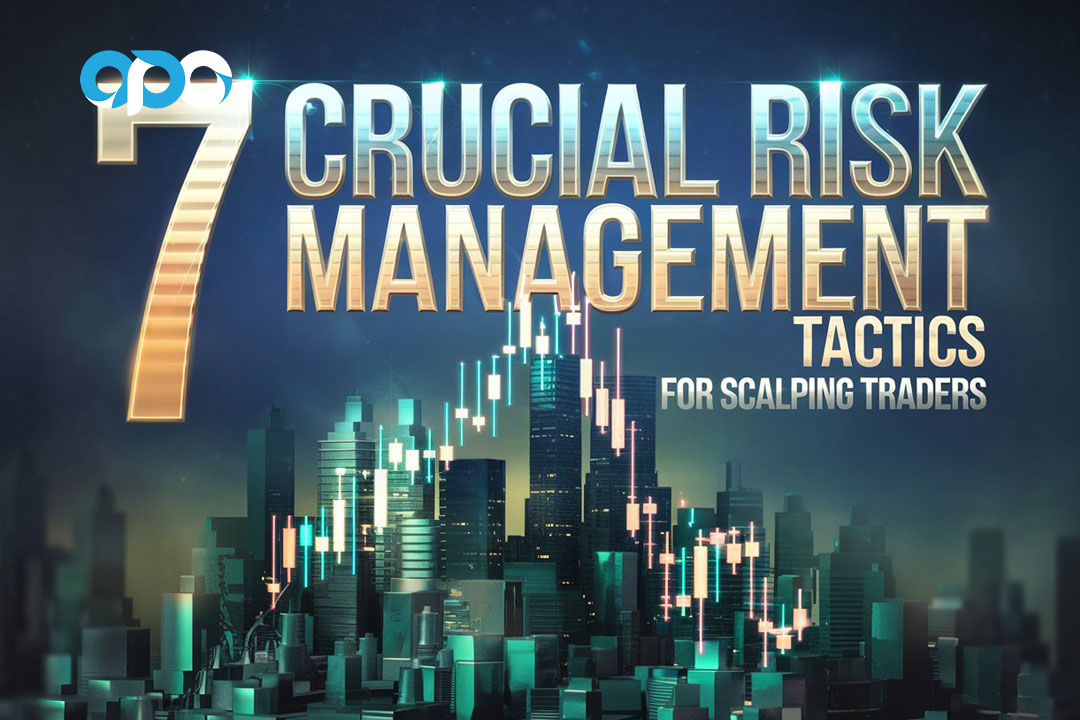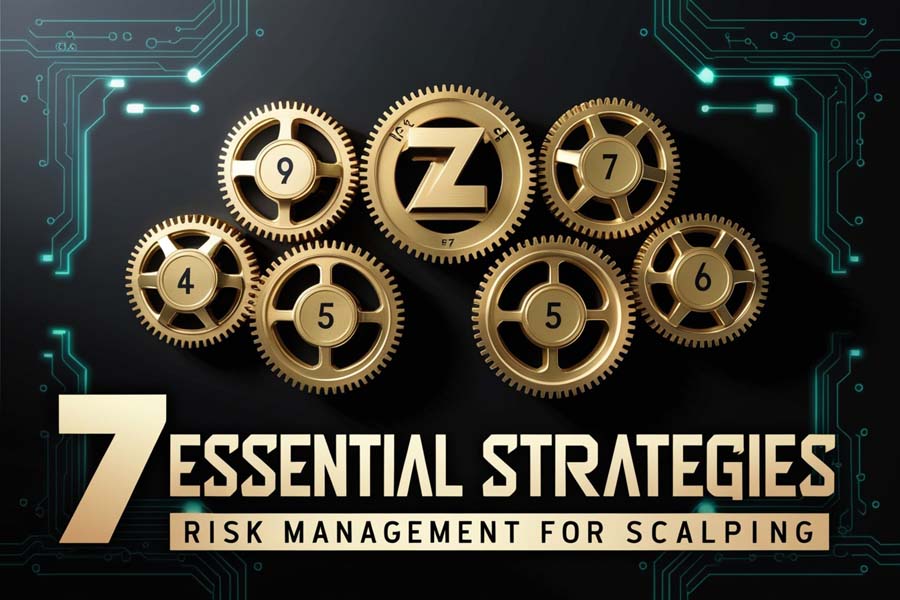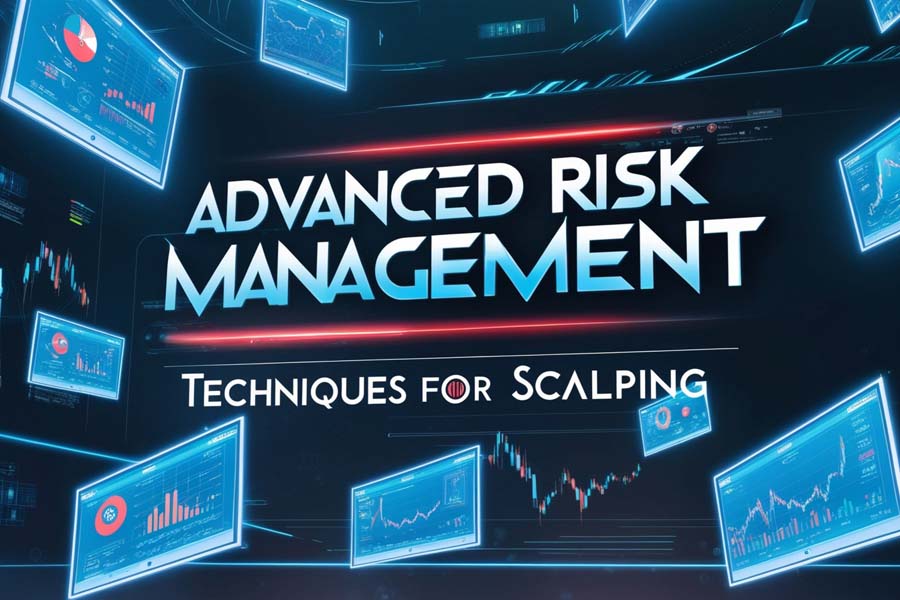Risk management in scalping is the process of identifying, analyzing, and mitigating potential losses in high-frequency, short-term trading. It’s a critical skill for forex traders who aim to profit from small price movements by making numerous trades throughout the day. Effective risk management in scalping involves setting strict stop-loss orders, proper position sizing, and maintaining emotional discipline. This comprehensive guide will explore seven essential risk management strategies that can help scalping traders protect their capital and maximize their profits in the volatile forex market. Whether you’re using a regulated forex broker or trading independently, mastering these tactics is crucial for long-term success in scalping.

Understanding Scalping and Its Inherent Risks

What is Scalping?
Scalping is a trading strategy that involves making numerous small profits on minor price changes throughout the day. Scalpers aim to take advantage of the market’s liquidity and volatility to make quick trades, often holding positions for just a few seconds or minutes.
The Double-Edged Sword of Scalping
While scalping can be highly profitable, it comes with significant risks:
- High Frequency Trading: The sheer number of trades increases the likelihood of errors and emotional decision-making.
- Leverage: Scalpers often use high leverage, which can magnify both profits and losses.
- Market Volatility: Sudden price movements can quickly turn a profitable position into a loss.
- Transaction Costs: Frequent trading incurs higher commissions and spreads, which can eat into profits.
Read More: Best Time Frames for Scalping
7 Essential Risk Management Strategies for Scalping

1. Set Strict Stop-Loss and Take-Profit Levels
One of the fundamental principles of risk management in scalping is setting and adhering to strict stop-loss and take-profit levels.
- Stop-Loss: Place a stop-loss order immediately after entering a trade. This limits your potential losses if the market moves against you.
- Take-Profit: Set a realistic take-profit level to secure your gains before the market potentially reverses.
Key Insight: A common rule of thumb is to aim for a risk-reward ratio of at least 1:1.5, meaning your potential profit should be 1.5 times your potential loss.
2. Implement Proper Position Sizing
Effective position sizing is crucial in managing risk when scalping.
- 1% Rule: Never risk more than 1% of your trading capital on a single trade.
- Adjust for Volatility: Reduce position sizes during highly volatile market conditions.
Example: If your trading account has $10,000, your maximum risk per trade should not exceed $100.
3. Use Leverage Wisely
Leverage is a double-edged sword in scalping. While it can amplify profits, it can also lead to significant losses if not managed properly.
- Start Small: Begin with lower leverage ratios (e.g., 5:1 or 10:1) and increase gradually as you gain experience.
- Adjust Leverage: Reduce leverage during high-impact news events or periods of increased market volatility.
Warning: Never use maximum leverage offered by your broker. It’s a recipe for disaster in scalping.
4. Employ Advanced Order Types
Utilize advanced order types to automate your risk management:
- Trailing Stop: Automatically adjusts your stop-loss as the price moves in your favor.
- One-Cancels-Other (OCO): Combines a stop-loss and take-profit order, ensuring one is executed when the price reaches either level.
Pro Tip: Use a trailing stop to lock in profits while allowing for potential further gains.
5. Monitor and Manage Your Risk-Reward Ratio
Consistently tracking your risk-reward ratio is essential for long-term profitability in scalping.
- Aim for Consistency: Strive for a positive risk-reward ratio over a series of trades, rather than focusing on individual trades.
- Adjust Strategies: If your risk-reward ratio is consistently negative, reassess and adjust your scalping strategy.
Statistic: Successful scalpers often maintain an average risk-reward ratio of 1:1.5 to 1:2 across their trades.
6. Implement a Robust Money Management System
A well-designed money management system is crucial for managing risk in scalping:
- Daily Loss Limit: Set a maximum daily loss limit (e.g., 3% of your account balance) and stop trading if reached.
- Profit Targets: Establish daily and weekly profit targets to avoid overtrading.
- Risk Allocation: Divide your trading capital into segments for different strategies or time frames.
Key Principle: Capital preservation should always be your primary goal in scalping.
7. Develop and Stick to a Trading Plan
A comprehensive trading plan is your roadmap to successful risk management in scalping:
- Entry and Exit Rules: Clearly define your criteria for entering and exiting trades.
- Risk Parameters: Specify your risk tolerance, position sizing rules, and leverage limits.
- Emotional Control: Include strategies for maintaining discipline and managing emotions during trading sessions.
Important: Regularly review and update your trading plan based on your performance and changing market conditions.
Read More: Best Indicator for Gold Scalping
The Psychology of Risk Management in Scalping

Understanding and managing the psychological aspects of scalping is crucial for effective risk management:
Emotional Discipline
- Avoid Revenge Trading: Don’t try to immediately recover losses by taking on higher risk trades.
- Stay Calm Under Pressure: Develop techniques to maintain composure during volatile market conditions.
Overcoming Common Psychological Pitfalls
- Fear of Missing Out (FOMO): Resist the urge to enter trades without proper analysis.
- Overconfidence: Don’t let a string of successful trades lead to excessive risk-taking.
- Analysis Paralysis: Balance thorough analysis with the need for quick decision-making in scalping.
Expert Advice: “The best traders are not those who never lose, but those who manage their losses effectively.” – Anonymous
Advanced Risk Management Techniques for Scalping

Correlation-Based Risk Management
- Diversification: Trade uncorrelated or negatively correlated currency pairs to spread risk.
- Basket Trading: Create a basket of correlated pairs to hedge against individual pair volatility.
Volatility-Based Position Sizing
- ATR Indicator: Use the Average True Range (ATR) indicator to adjust position sizes based on current market volatility.
- Volatility Filters: Implement filters to avoid trading during extremely high volatility periods.
Machine Learning and AI in Risk Management
- Pattern Recognition: Utilize AI algorithms to identify high-probability setups and potential risks.
- Predictive Analytics: Employ machine learning models to forecast potential market movements and adjust risk parameters accordingly.
Cutting-Edge Insight: Some advanced scalpers are now using AI-powered tools to analyze market sentiment from social media and news sources, incorporating this data into their risk management strategies.
Tools and Software for Effective Risk Management in Scalping
To implement robust risk management strategies, scalpers rely on various tools and software:
- Risk Calculator: Automatically compute position sizes based on your risk parameters.
- Trade Journal: Track and analyze your trades to identify patterns and areas for improvement.
- VPS (Virtual Private Server): Ensure consistent execution speeds and reduce the risk of disconnections.
- Economic Calendar: Stay informed about upcoming high-impact news events that could affect your trades.
Tech Tip: Consider using a multi-screen setup to simultaneously monitor multiple charts, news feeds, and risk management tools.
Read More: Parabolic SAR scalping strategy
Adapting Risk Management Strategies to Different Market Conditions
Effective risk management in scalping requires the ability to adapt to changing market conditions. Here are some strategies for different scenarios:
High Volatility Markets
- Reduce Position Sizes: Lower your exposure during periods of increased market turbulence.
- Widen Stop-Losses: Account for larger price swings by setting wider stop-loss levels.
- Focus on Major Pairs: Stick to more liquid currency pairs that tend to have tighter spreads even in volatile conditions.
Low Volatility Markets
- Adjust Profit Targets: Set smaller take-profit levels to account for reduced price movements.
- Increase Trade Frequency: Look for more trading opportunities to compensate for smaller profits per trade.
- Consider Range-Bound Strategies: Implement scalping techniques that capitalize on sideways market movements.
Trending Markets
- Align with the Trend: Focus on scalping opportunities in the direction of the overall trend.
- Use Trailing Stops: Capitalize on strong trends by letting profits run with trailing stop-loss orders.
- Be Cautious of Reversal Points: Pay extra attention to potential trend reversal signals and adjust your risk accordingly.
The Role of Backtesting in Risk Management
Backtesting is a crucial component of developing and refining your risk management strategy in scalping:
- Historical Performance: Analyze how your strategy would have performed under various market conditions.
- Optimize Parameters: Fine-tune your stop-loss, take-profit, and position sizing rules based on historical data.
- Stress Testing: Simulate extreme market conditions to assess how your risk management holds up under pressure.
Best Practice: Regularly backtest your strategies on recent market data to ensure they remain effective in current conditions.
Continuous Learning and Improvement
Risk management in scalping is not a set-it-and-forget-it process. It requires ongoing education and refinement:
- Stay Informed: Keep up with the latest developments in forex markets, trading technologies, and risk management techniques.
- Network with Other Traders: Join online forums or local trading groups to share ideas and learn from others’ experiences.
- Attend Webinars and Workshops: Participate in educational events focused on risk management and scalping strategies.
- Review and Adapt: Regularly analyze your trading performance and be willing to adjust your risk management approach as needed.
OpoFinance Services: A Trusted Partner for Scalpers
When it comes to executing your scalping strategy with proper risk management, choosing the right broker is paramount. OpoFinance, an ASIC-regulated forex broker, offers a range of services tailored to the needs of scalpers:
- Tight Spreads: Minimize transaction costs with competitive spreads.
- Fast Execution: Benefit from lightning-fast order execution, crucial for successful scalping.
- Advanced Trading Platforms: Access state-of-the-art platforms with built-in risk management tools.
- Social Trading: Learn from and copy successful traders’ strategies, including their risk management techniques.
- Safe and Convenient Deposits and Withdrawals: Ensure your funds are secure and easily accessible.

As an officially featured broker on the MT5 brokers list, OpoFinance provides a reliable and regulated environment for scalpers to implement their risk management strategies effectively.
Conclusion
Mastering risk management in scalping is an ongoing process that requires dedication, discipline, and continuous learning. By implementing the strategies outlined in this guide – from setting strict stop-loss levels to leveraging advanced tools and technologies – you can significantly improve your chances of long-term success in the challenging world of scalping.
Remember, effective risk management is not about avoiding losses entirely, but about minimizing their impact while maximizing your potential for profit. As you refine your scalping strategy, always keep risk management at the forefront of your trading decisions. With practice and persistence, you can develop the skills necessary to navigate the high-stakes world of scalping while protecting your trading capital.
By staying committed to sound risk management principles, continuously adapting to market conditions, and leveraging the right tools and resources, you can build a sustainable and profitable scalping career in the forex market.
How does high-frequency trading affect risk management in scalping?
High-frequency trading in scalping amplifies both opportunities and risks. It increases the number of trades executed, potentially leading to more frequent small gains. However, it also raises the risk of compounded losses if proper risk management isn’t in place. Scalpers must be extra vigilant with their risk parameters, ensuring that each trade adheres to strict risk-reward ratios and that cumulative risk doesn’t exceed predetermined limits. Automated risk management systems become crucial in high-frequency scalping to monitor and adjust positions in real-time, preventing emotional decision-making and maintaining discipline across numerous rapid trades.
What role does market liquidity play in risk management for scalpers?
Market liquidity is a critical factor in risk management for scalpers. Highly liquid markets typically offer tighter spreads and more consistent price movements, which can reduce the risk of slippage and unexpected price gaps. However, scalpers must be aware that liquidity can vary throughout the trading day and during specific market events. Lower liquidity periods can lead to wider spreads and more erratic price movements, increasing the risk of losses. Effective risk management in scalping involves monitoring liquidity levels and adjusting trading strategies accordingly, potentially reducing position sizes or avoiding trading altogether during low liquidity periods to mitigate increased risks.
How can scalpers effectively manage risk during major economic news releases?
Managing risk during major economic news releases is particularly challenging for scalpers due to the potential for sudden, large price movements. One effective strategy is to avoid trading immediately before and during high-impact news events. If a scalper chooses to trade during these times, they should significantly reduce position sizes and widen stop-loss levels to account for increased volatility. Some scalpers use a “news filter” in their trading plan, which automatically suspends trading activities during predefined news events. Additionally, implementing “gap protection” orders can help limit losses if prices gap beyond normal stop-loss levels. It’s crucial for scalpers to stay informed about upcoming economic releases and adjust their risk management approach accordingly to protect their capital during these volatile periods.







